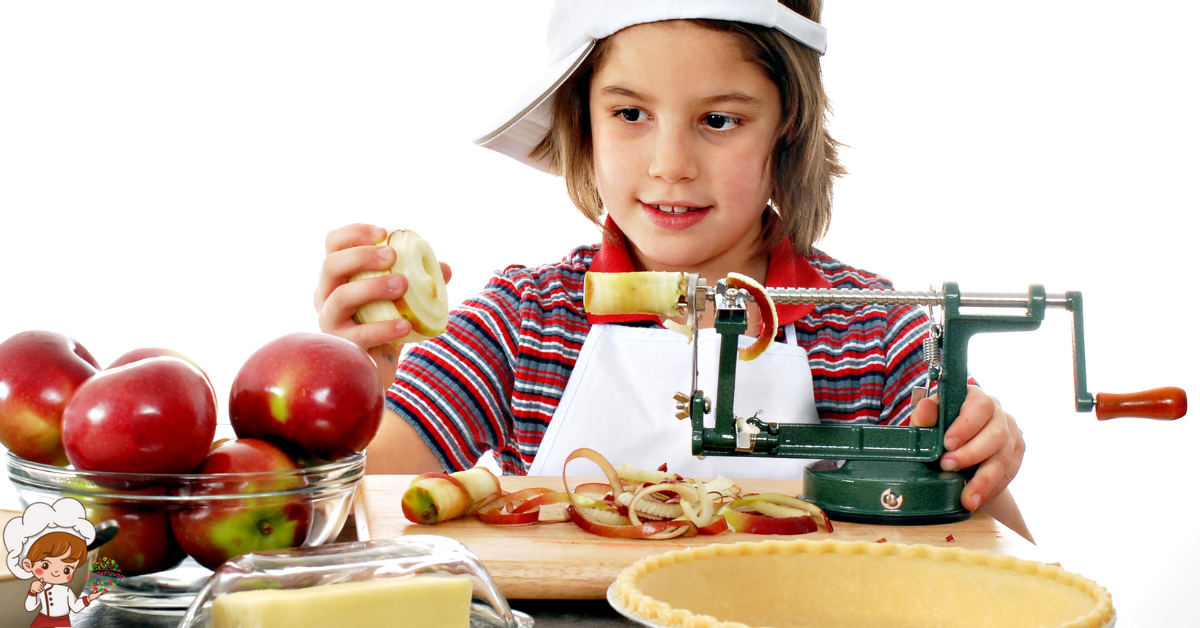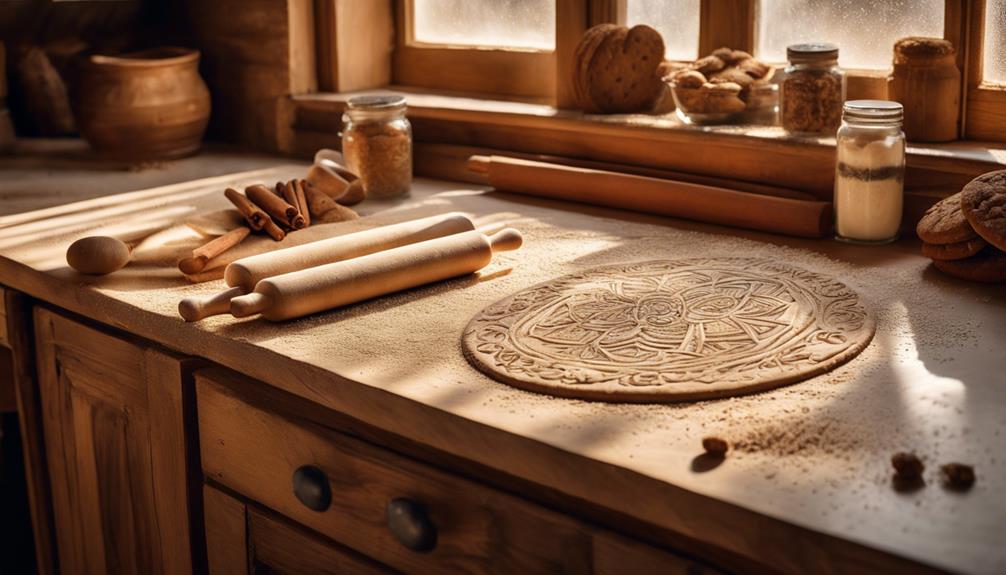Unleashing The Secret To The Best Perfect Chewy Brownies

Chewy Brownies; Do you know that 8 out of 10 people prefer chewy brownies over cakey ones? If you’re one of them, then you’re in for a treat! In this guide, we will unleash the secret to achieving the perfect chewy brownies that will satisfy your sweet tooth like never before. By following a few simple steps, you’ll learn how to choose the right type of chocolate, use melted butter for maximum chewiness, and add the perfect amount of sugar.
We’ll also reveal the secret ingredient that takes the chewiness to a whole new level and explain the role of eggs and flour in creating that perfect texture. So, let’s get started on your journey to creating the most delectable, chewy brownies you’ve ever tasted!
Choosing the Right Type of Chocolate
To achieve the perfect chewy brownies, you need to choose the right type of chocolate. When it comes to selecting chocolate for your brownie recipe, it is crucial to opt for high-quality chocolate. The quality of chocolate significantly impacts the texture and overall taste of your brownies.
One important factor to consider is the cocoa percentage of the chocolate. Cocoa percentage refers to the amount of cocoa solids present in the chocolate. Higher cocoa percentages result in a more intense chocolate flavor and a richer, fudgier texture. On the other hand, lower cocoa percentages yield a milder chocolate taste and a softer, cake-like texture.
For those who prefer a chewier brownie, it is advisable to choose a chocolate with a higher cocoa percentage, typically around 60% or more. This higher cocoa content provides more cocoa solids, which contribute to the desired chewiness. Additionally, the higher cocoa butter content in these chocolates helps create a denser, fudgier texture.
However, if you prefer a lighter and cake-like brownie, opt for a chocolate with a lower cocoa percentage, usually around 40-50%. This lower cocoa content allows for a lighter and more airy texture, perfect for those who prefer a cake-like consistency in their brownies.
The Importance of Using Melted Butter
Using melted butter is key to achieving perfect chewy brownies. The science behind melted butter lies in its ability to create a dense and moist texture in the final product. When butter is melted, it breaks down into its components: fat, water, and milk solids. This breakdown contributes to a more even distribution of fat throughout the batter, resulting in a tender and moist crumb.
Achieving the perfect texture in brownies is all about finding the right balance between fat and moisture. Melted butter helps in this regard by providing both. The fat from the butter coats the flour particles, inhibiting gluten formation and creating a more tender texture. Additionally, the moisture from the butter adds moisture to the batter, preventing the brownies from becoming dry and crumbly.
To ensure that the melted butter is incorporated properly into the brownie batter, it is important to follow a few guidelines. Firstly, make sure to melt the butter gently, either in a saucepan over low heat or in the microwave at short intervals. This prevents the butter from getting too hot and losing its emulsified structure. Secondly, allow the melted butter to cool slightly before adding it to the other ingredients. This prevents the butter from cooking the eggs and causing them to curdle.
Adding the Perfect Amount of Sugar
Now, let’s focus on the ideal amount of sugar to add to your brownie batter. The amount of sugar you incorporate into your brownie recipe plays a crucial role in achieving the perfect texture and flavor. Here are some key points to keep in mind when it comes to adding sugar to your brownie batter:
- Finding the right balance: Achieving the perfect balance of sweetness is essential. Too little sugar can result in bland and lackluster brownies, while too much can overpower the other flavors and make the brownies overly sweet. Experimenting with different sweeteners can help you find the ideal amount for your taste preferences.
- Impact of sugar substitutes: If you’re looking to reduce the amount of refined sugar in your brownies, you may consider using sugar substitutes like stevia, honey, or maple syrup. However, keep in mind that these substitutes can alter the texture and taste of your brownies. It’s best to follow a recipe specifically designed for using sugar substitutes or to experiment in small batches to find the right ratio.
- Texture and moisture: Sugar not only adds sweetness but also contributes to the texture and moisture of your brownies. The sugar crystals dissolve during baking, creating a moist and tender crumb. Using the right amount of sugar will help you achieve that perfect fudgy or chewy texture that we all love in brownies.
The Secret Ingredient for Extra Chewiness
For extra chewiness in your brownies, incorporate a secret ingredient. Achieving the ideal texture in your brownies can be a delicate balancing act, but with the addition of this extra ingredient, you can take your chewy brownies to a whole new level. This secret ingredient is none other than cornstarch.
Cornstarch, a fine white powder made from the endosperm of corn kernels, is often used as a thickening agent in various recipes. However, its unique properties also make it an excellent addition to brownie batter. When added in the right amount, cornstarch can contribute to the perfect chewiness that every brownie lover craves.
The inclusion of cornstarch in your brownie recipe is simple. Just add a tablespoon or two of cornstarch to your dry ingredients before combining them with the wet ingredients. Be sure to sift the cornstarch to prevent any lumps from forming in your batter.
The cornstarch works its magic by absorbing moisture during the baking process, creating a denser and chewier texture. It helps to bind the ingredients together, resulting in a fudgy and satisfying brownie bite.
Remember to make adjustments to the baking time and temperature when using cornstarch in your recipe, as it may affect the overall baking process. Keep an eye on your brownies and use a toothpick to test for doneness.
The Role of Eggs in Achieving Chewy Brownies
To achieve chewy brownies, you’ll need to understand the role eggs play in the recipe. Eggs are a crucial ingredient that greatly contributes to the texture and moisture of the final product. Here are three key ways in which eggs impact the chewiness of brownies:
- Moisture Retention: Eggs are a significant source of moisture in brownie recipes. The water content in eggs helps to keep the brownies moist and prevents them from becoming dry and crumbly. Without eggs, the brownies would lack the necessary moisture to achieve that desirable chewy texture.
- Binding Agent: Eggs act as a binding agent in brownie recipes. The proteins in eggs help to hold the ingredients together, creating a cohesive structure. This binding effect contributes to the chewiness of the brownies, as it allows the ingredients to stick together rather than falling apart.
- Fat Interaction: Eggs contain fat, and the type of fat used in the recipe can impact the texture of the brownies. For chewy brownies, recipes often call for using eggs with a higher fat content, such as large eggs or even extra-large eggs. The additional fat from the eggs contributes to the richness and chewiness of the brownies.
It is important to note that while eggs play a significant role in achieving chewy brownies, other factors such as the amount of sugar, flour, and leavening agents also contribute to the final texture. By understanding the role of eggs and carefully balancing the ingredients, you can unlock the secret to perfect chewy brownies.
Incorporating the Right Amount of Flour
Mix in the flour gradually to ensure proper incorporation. When it comes to baking the perfect chewy brownies, accurately measuring your ingredients is of utmost importance. Achieving the right texture requires not only the right amount of ingredients but also proper baking techniques. The flour, in particular, plays a crucial role in determining the final texture of your brownies.
Accurate measurement of flour is essential for achieving the desired texture in your brownies. Too much flour can result in a dry and crumbly texture, while too little can make them overly moist and dense. To ensure you have the right amount, it’s important to measure your flour correctly. Use a kitchen scale to weigh your flour or spoon it into a measuring cup and level it off with a straight edge. This will help you achieve consistent results every time.
Once you have measured your flour accurately, it is vital to incorporate it into the brownie batter properly. Mixing the flour gradually ensures that it is evenly distributed throughout the batter, preventing any pockets of dry flour that can lead to an uneven texture. Gradually adding the flour also helps to avoid overmixing, which can result in tough and dense brownies.
Properly incorporating the right amount of flour is just one piece of the puzzle when it comes to achieving the perfect chewy brownies. Remember to measure your ingredients accurately and follow proper baking techniques to ensure the best results. So, mix in the flour gradually, measure it accurately, and enjoy the chewy, fudgy goodness of your homemade brownies.
The Art of Mixing the Batter Just Right
Achieve the perfect texture in your brownies by carefully incorporating the batter. The way you mix the batter plays a crucial role in achieving the desired texture. Follow these mixing techniques to ensure your brownies turn out just right:
- Gently folding: When adding dry ingredients to the wet mixture, avoid aggressive stirring. Instead, gently fold the ingredients together using a spatula or a wooden spoon. This method helps prevent overmixing, which can result in tough and dense brownies. Imagine the smooth, velvety batter slowly enveloping the dry ingredients, creating a harmonious blend.
- Circular motion: As you fold the ingredients, use a circular motion to evenly distribute the wet and dry components. This motion helps ensure that every particle of flour is properly incorporated, leaving no lumps or pockets of dry mixture. Picture the batter swirling in a hypnotic dance, as it gradually transforms into a homogenous mixture.
- Light and airy: To achieve a light and airy texture, mix the batter until the ingredients are just combined. Overmixing can lead to excess gluten development, resulting in a tougher and less tender brownie. Imagine the batter coming together like a delicate cloud, effortlessly melding into a rich and fudgy delight.
Achieving the Perfect Baking Time and Temperature
Ensure that you set the precise baking time and temperature for your brownies to achieve the perfect texture and consistency. Baking with alternative sweeteners and experimenting with different types of fats can greatly affect the final outcome of your brownies. To master the art of perfect brownie baking, it is crucial to understand the importance of time and temperature.
When it comes to baking brownies with alternative sweeteners, such as honey or maple syrup, it is essential to adjust the baking time and temperature accordingly. Since alternative sweeteners tend to have higher moisture content, the baking time may need to be extended slightly to ensure that the brownies are fully cooked. It is recommended to reduce the oven temperature by 25°F and increase the baking time by a few minutes to achieve the desired consistency.
Similarly, when experimenting with different types of fats in your brownie recipe, the baking time and temperature may need to be altered. For instance, using butter instead of oil can lead to a quicker browning process due to the higher fat content. To prevent over-baking, it is advisable to reduce the oven temperature by 25°F and monitor the brownies closely to ensure they are baked to perfection.
The Key to Cooling and Cutting Brownies for Maximum Chewiness
To achieve maximum chewiness in your brownies, it is crucial to follow two key steps: optimal cooling time and a precise cutting technique. Cooling the brownies to room temperature allows the texture to set and the flavors to fully develop. Once cooled, use a sharp knife to make clean, straight cuts, ensuring each piece retains its chewy consistency.
Optimal Cooling Time
Cool your brownies for at least 30 minutes before cutting them to achieve maximum chewiness. Optimal cooling techniques can greatly influence the texture and taste of your brownies. Experimenting with different cooling methods can help you find the perfect balance between a soft, fudgy interior and a chewy exterior. Here are three sub-lists to create imagery in your mind:
- Room Temperature Cooling:
- Place the brownies on a wire rack to cool.
- Allow them to cool naturally, uncovered, to prevent condensation.
- This method promotes even cooling and helps retain moisture, resulting in a chewy texture.
- Refrigerator Cooling:
- Wrap the brownies tightly in plastic wrap or place them in an airtight container.
- Refrigerate for a few hours or overnight.
- This method firms up the brownies, intensifying their chewiness.
- Freezer Cooling:
- Wrap the brownies in plastic wrap and place them in an airtight container.
- Freeze for a couple of hours.
- This method creates a dense and chewy texture by reducing moisture content.
Precise Cutting Technique
Get ready to unleash the maximum chewiness of your brownies by mastering the art of precise cutting. Achieving the perfect texture requires more than just a sharp knife. Start by ensuring your brownies have cooled completely before attempting to cut them. This will prevent any crumbling or sticking. Next, use precise measuring techniques to cut your brownies into uniform shapes and sizes. This will ensure even baking and consistent texture throughout.
When cutting, make sure to use a gentle, yet firm, downward motion to avoid compressing the brownies and altering their chewiness. Aim for clean, straight edges to enhance the visual appeal of your brownies. By following these precise cutting techniques, you can elevate your brownie game and achieve the ultimate chewy delight.
Frequently Asked Questions
Can I Use Any Type of Chocolate for Chewy Brownies?
You can use any type of chocolate for chewy brownies. However, using high-quality chocolate with a higher cocoa content will result in a richer flavor. Additionally, you can substitute melted butter with oil or applesauce for a healthier alternative.
Does Using Melted Butter Instead of Softened Butter Make a Difference in the Texture of Brownies?
Using melted butter instead of softened butter can make a difference in the texture of brownies. Melted butter has a lower moisture content, resulting in a denser and chewier brownie.
How Much Sugar Should I Add to Achieve the Perfect Chewiness in Brownies?
To achieve a fudgy texture in brownies, add the right amount of sugar. Finding the perfect balance of chewiness and gooeyness depends on your preference. Experiment with different sugar quantities until you reach your desired consistency.
What Is the Secret Ingredient That Makes Brownies Extra Chewy?
To achieve chewy brownies without eggs, the secret ingredient is applesauce. Adding applesauce to the batter helps retain moisture and creates a soft, chewy texture. Experiment with different amounts to find your desired level of chewiness.
How Do Eggs Contribute to Achieving a Chewy Texture in Brownies?
To achieve a chewy texture in brownies without using eggs, you can explore alternative ingredients. Other ways to achieve chewiness include using melted butter, adding corn syrup or honey, and increasing the amount of brown sugar.
Conclusion
In conclusion, by carefully selecting the right type of chocolate, using melted butter, adding the perfect amount of sugar, incorporating a secret ingredient for extra chewiness, considering the role of eggs and the amount of flour, mastering the art of mixing the batter, achieving the perfect baking time and temperature, and employing the key techniques for cooling and cutting, one can unleash the secret to perfect chewy brownies. These precise steps ensure a technical approach to creating the most delicious and satisfying chewy brownies.








